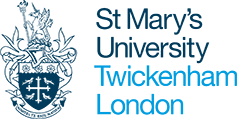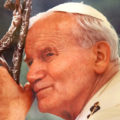Talk to the Pro-life Summit, 6th September 2025
The humanity of the unborn and the fact that an unborn baby is a “him” or a “her” is a scientific and rational reality. It is not just a matter of faith or religious belief.
From the moment of conception, the unborn baby is developing – a heart, a brain, a nervous system and little baby feet. But, in no other area of law do we permit the killing of individuals because they are still developing.
Some babies will become disabled children, and we can detect that in the womb. But, in no other area of law do we kill somebody just because they are disabled.
The unborn baby is, of course, entirely dependent on their mother. But, in no other area of law do we permit the killing of an individual because they are entirely dependent on another person.
In reality, very few people could kill another person, and yet nearly one-third of babies who are conceived are killed.
There can only be one reason why we allow this. We have convinced ourselves that they are not actually babies. And the way we have done that is through the abuse of language. Those who campaign for legalised abortion use euphemisms – in other words, they use a form of language designed to avoid a reality that is too painful to confront.
At the time the 1967 Abortion Act was passed, an unborn baby would have been considered exactly that – a baby that was living but not yet born. Indeed, however misguided and however awful the consequences of that Act, on some fundamental level, at that time, it was understood that abortion meant the ending of a life.
The legal framework that surrounded the 1967 Abortion Act originated 160 years ago. The three Acts of Parliament that sat alongside the Abortion Act were called “The Infant Life Preservation Act”, “The Child Destruction Act” and the “Offences Against the Person Act”.
Is it not extraordinary that, nearly 200 years ago, without the advances in scientific understanding we have now, we called the unborn baby what it is – a “person”, a “child” and an “infant life”. How have we unlearned what is rationally and scientifically true?
Culture and language
There is no doubt that the culture has changed. And the culture has changed, at least in part, because the language has changed.
This might sound like an academic point, but it is important: very few people think explicitly about the detailed moral implications of every political and moral view they hold. We work on the basis of rules of thumb. We absorb things from our culture. So, if people who support legal abortion are able to change the language we use, they have won more than half the battle. If they can ensure that people instinctively think that an infant life is a bunch of cells or part of a woman’s body, then those who want to protect life in the womb end up trying to push water uphill.
The language used by pro-abortion campaigners dehumanises the person in the womb in order to turn abortion into a neutral or even a positive action. Nobody would want to kill a human person, so the objective of pro-abortion campaigners is to ensure that we do not think of the unborn child as a human person. And those efforts have been shockingly successful. Unborn babies, for example, are described as part of the woman’s body and not as children with their own body. And abortion is described as a “reproductive choice”.
Politicians and international organisations
You would expect pro-abortion campaigners to try to change the terms of debate by changing the meaning of words – that’s how political debates works. But the problem goes much deeper.
The World Health Organisation strongly promotes pro-abortion policies in the name of healthcare. For example, the Word Health Organisation’s main front-page statement on abortion: “Induced abortion is a simple and common health-care procedure…Ensuring that women and girls have access to abortion care…is fundamental to meeting the Sustainable Development Goals (SDGs) relating to good health and well-being (SDG3).” In fact, the ability to legally medically abort an unborn baby is not fundamental to meeting any sustainable development goal, nor is it healthcare.
Our own government links abortion to the provision foreign aid, describing abortion as a “health and reproductive right”. As the late Pope Francis said, this represents nothing other than ideological colonisation because the peoples of most of the countries that receive foreign aid know, just as we used to know, that abortion involves the taking of the life of a human being.
When buffer zones were placed around abortion clinics, politician after politician (including many who were also lawyers) said that buffer zones were being imposed to prevent harassment and intimidation around abortion clinics. Again, this is an abuse of language. Not only was there no harassment and intimidation taking place – as was found by a Home Office inquiry – harassment and intimidation were already illegal under various pre-existing acts of parliament. Supporters of the banning of prayer and the offering of help to pregnant mothers used words such as “harassment” and “intimidation” in order to make their extreme views seem reasonable.
Indeed, this has now become the official language of government. The responsible minister, Jess Phillips, on the relevant government website, writes how buffer zones are necessary to “prevent harassment, intimidation and to ensure access to healthcare”. Abortion appears under the guise of healthcare and prayer is described as harassment.
Conclusion
When it comes to the question of abortion and the status of the unborn baby, those who are making pro-life arguments have the advantage of their perspective being a clear matter of scientific fact. Writing about mammals in general, National Geographic (hardly a hotbed of social conservatism) states: “Sexual reproduction occurs when the sperm from the male parent fertilizes an egg from the female parent, producing an offspring that is genetically different from both parents.” In other words, abortion happens after reproduction! It is not a reproductive choice.
The great pro-life campaigner, Ruth Pakaluk, who was an atheist who became a Catholic, said explaining her work in the pro-life area: “I know that abortion kills a member of the human race. This is not a religious belief: it is simply a biological fact.” Indeed, it is a biological fact with profound implications.
So where do we go from here?
There are trends running in our direction. Surely, advances in scanning must ultimately have some impact on culture. There are see some favourable legal developments. Parents can now receive a baby-loss certificate if they lose their baby through miscarriage before 24 weeks. The same people who call for wider access to abortion (calling it healthcare) often call for more rights for mothers who experience miscarriage (when they call it a baby). How can that cognitive dissonance last?
We must make the case that, as soon as conception takes place, there is a life that needs nurturing. Our language and our practice must focus on promoting the humanity of the unborn child which, in turn, our laws must protect. Let me end with three brief suggestions. Firstly, in parish intercessions, we should pray for the unborn and for parents of unborn children – they need your prayers. Secondly, we should include in our prayer parents who have experienced miscarriage. Thirdly, in parish bereavement groups, we should invite parents who have had a miscarriage – and perhaps, when they are ready, invite them to give a talk.
If we are truly to change the culture so that, once again, we think of an unborn baby as a human person, we must begin with our own practice, and we can do that in simple ways.







